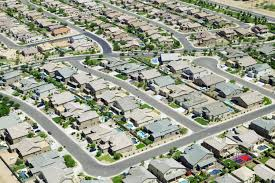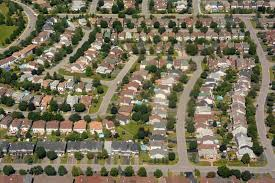
In recent years, the real estate market has seen big shifts in where people want to live. The choice between city life and suburban space is changing again, especially in 2025. So, where are homebuyers heading now—urban centers or suburban neighborhoods?
Let’s dive into the latest trends and what’s driving the change.

When the COVID-19 pandemic hit in 2020, everything changed. People started working from home, and the idea of needing to live close to work disappeared for many. This gave buyers more freedom to move away from crowded cities to the quieter suburbs. Suburban homes offered more space, larger yards, and sometimes better schools.
Between 2020 and 2022, suburban home sales soared. Cities like New York, San Francisco, and Chicago saw an outflow of residents, while nearby suburbs experienced a boom.

But trends don’t stay the same forever. Starting in late 2023 and into 2024, a shift began. As more companies adopted hybrid work models—where workers come into the office a few days a week—urban living became attractive again. People wanted shorter commutes, access to restaurants, entertainment, and the energy of city life.
Data from recent real estate reports shows:

Even with the city comeback, suburban living isn’t losing its appeal. Many families continue to choose the suburbs for several key reasons:
For example, in states like Texas, Florida, and North Carolina, suburban developments around major cities continue to see fast growth
Some cities are leading the way in attracting buyers back into urban areas:
City governments are also investing more in public transportation, green spaces, and safer neighborhoods, which helps bring people back.
Whether choosing urban or suburban areas, buyers in 2025 are looking for:
Millennials and Gen Z buyers are now a major force in the market. Their preferences are shaping where real estate trends go. While some seek the excitement of downtown living, others are hunting for peaceful spaces to raise a family.
Survey data shows:
Interestingly, there’s a growing demand for areas that offer a mix of both worlds. These are called “urban suburbs” or “surban” areas. Think of walkable, amenity-rich neighborhoods just outside the city. They offer easy access to downtown but with more space and lower prices.
Examples include:
This trend is likely to grow, as homebuyers look for balance between work, life, and cost.
In the battle of urban vs. suburban, the real answer is: it depends on your lifestyle. Cities are bouncing back, especially for young professionals and those wanting a vibrant life. Suburbs remain strong for families, remote workers, and people wanting more space.
As we move through 2025, one thing is clear—buyers now have more options than ever. With flexible work and shifting priorities, the idea of the “ideal home” has changed.
Whether it’s the heartbeat of the city or the quiet charm of the suburbs, the housing market is moving in both directions—and buyers are in the driver’s seat.
Read More:- Shobha Realty Launches Its Most Luxurious Project Yet—Full Details Inside 2025
